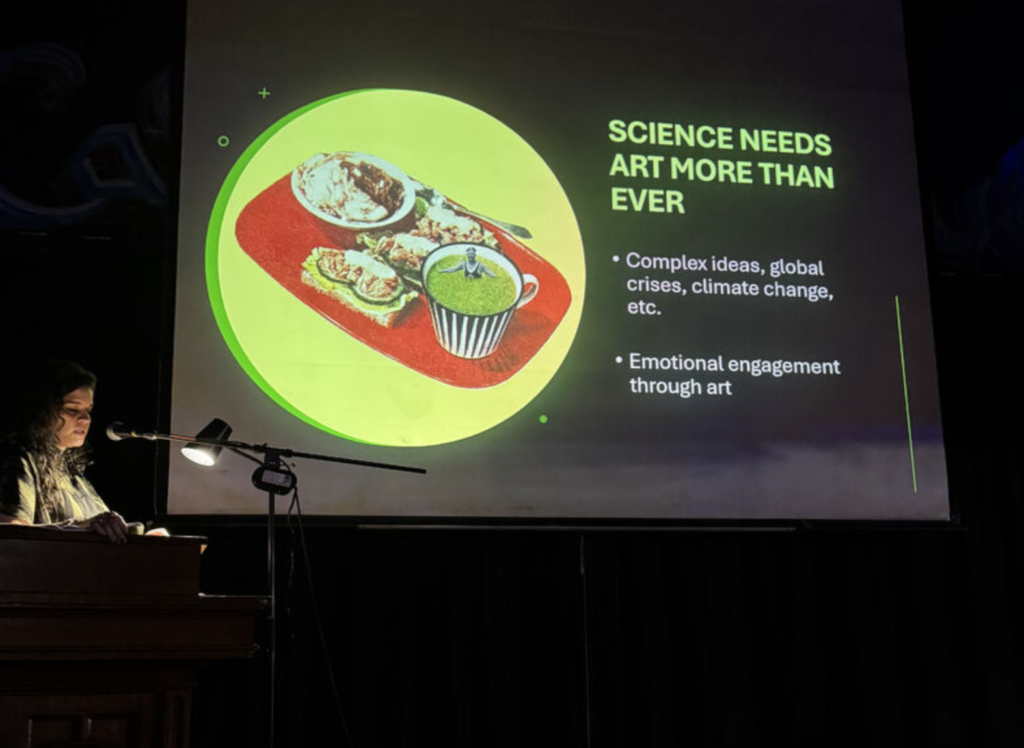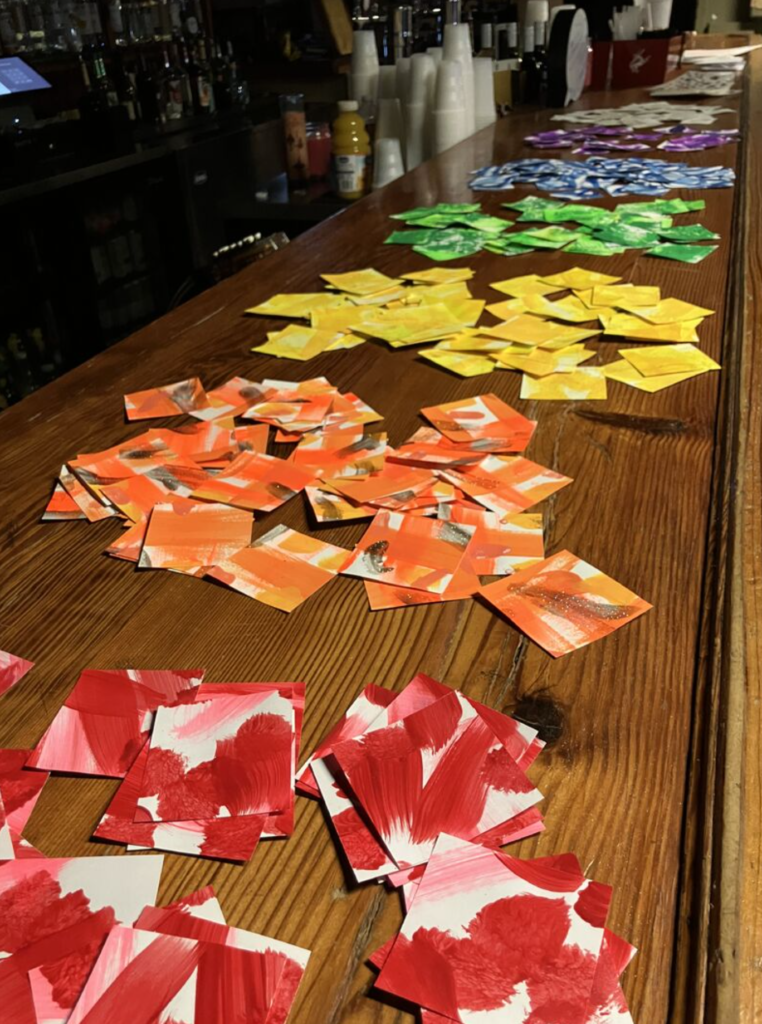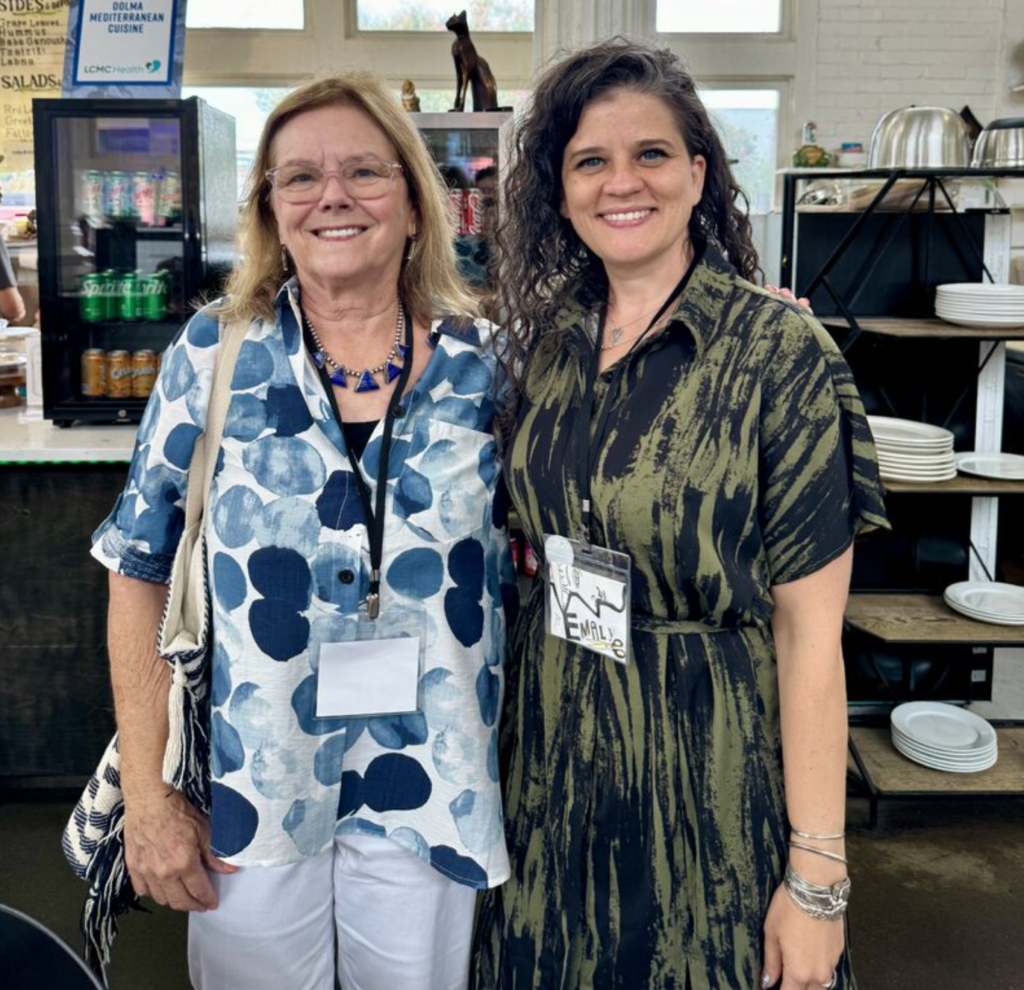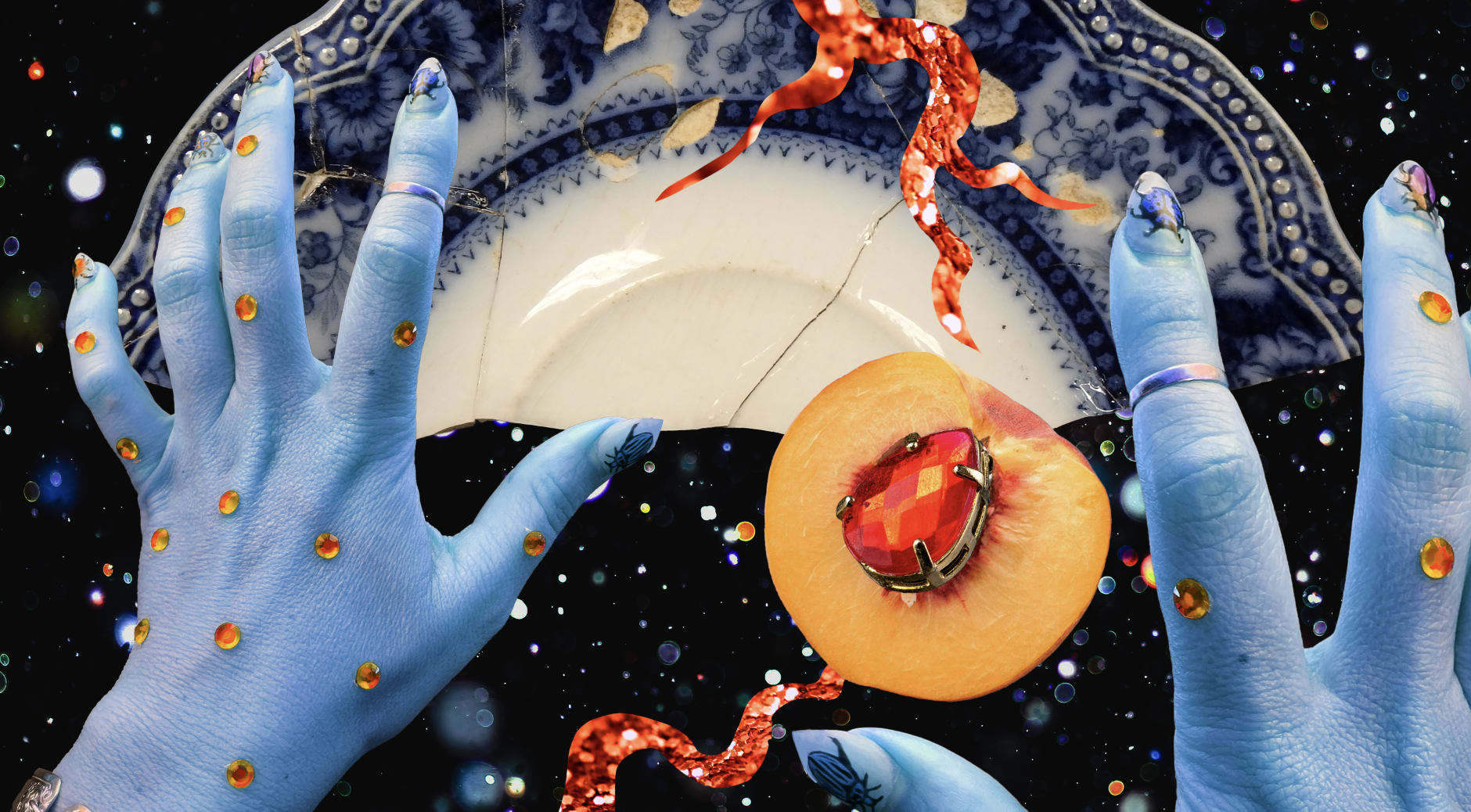Last week, I had the privilege of co-presenting with Debora Nodelman (pictured) at our symposium, Artist as Scientist, Scientist as Artist: Research, Collage, & The Pursuit of Knowledge, at Kolaj Fest New Orleans 2025.
Debora, a respected figure in the art-science community, holds a PhD in Education and identifies as an a/r/tographer—an Artist, Researcher, and Teacher. We’re on remarkably similar paths with our work, and it was an honor to share the stage with her. Her scholarship appears in journals and edited volumes on multicultural education, visual arts, research/er development, and arts-based methodologies.
At the festival, I also led my collaborative project, The Global Table: Tell Me While We Eat. 🍽️
What happens when strangers sit down to collage their dinner plates and talk? A shared table becomes a living canvas for dialogue, memory, and cultural exchange—rooted in plant pigments, handmade trading cards, family recipes, and food traditions.
My project asked: How can food, art, and storytelling build empathy and ignite collective action?
We explored how everyday rituals—like meals—can spark deeper connections, inviting diverse voices into conversation around identity, culture, and science. My goal: to reimagine the dinner table as a space for reflection, healing, and transformation.
Because science explains the world.
Art makes us feel it.
When you merge the two, you don’t just share knowledge—you ignite curiosity, emotion, and change. That’s why I design workshops, illustrations, and projects that blur the boundaries between art and science. Climate change, biodiversity, and the microscopic worlds around us aren’t just topics for the lab—they’re stories we can see, feel, and act on. 🔬🎨
What happens when we stop asking “Is it art or science?” and start asking “What can they become together?”
Let’s build more tables—and gather around them.



